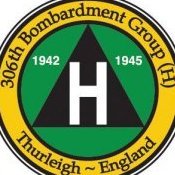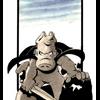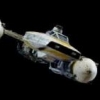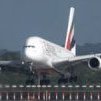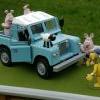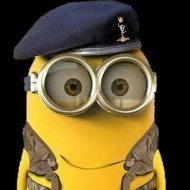Search the Community
Showing results for tags 'hobbyboss'.
-
French Pre-Dreadnought Condorcet Hobbyboss 1:350 Although the Danton-class battleships were a significant improvement from the preceding Liberté class, especially with the 3,000-ton displacement increase, they were outclassed by the advent of HMS Dreadnought well before they were completed. This, combined with other poor traits, including the great weight in coal they had to carry, made them rather unsuccessful ships, though their numerous rapid-firing guns were of some use in the Mediterranean. Construction of Condorcet was begun on 26 December 1906 by Ateliers et Chantiers de la Loire in Saint-Nazaire and the ship was laid down on 23 August 1907. She was launched on 20 April 1909 and was completed on 25 July 1911. Condorcet was initially assigned to the 1st Division of the 1st Squadron (escadre) of the Mediterranean Fleet when she was commissioned. The ship participated in combined fleet manoeuvres between Provence and Tunisia in May–June 1913and the subsequent naval review conducted by the President of France, Raymond Poincaré on 7 June 1913. Afterwards, Condorcet joined her squadron in its tour of the Eastern Mediterranean in October–December 1913 and participated in the grand fleet exercise in the Mediterranean in May 1914. Condorcet was 146.6 meters (481 ft 0 in) long overall and had a beam of 25.8 m (84 ft 8 in) and a full-load draft of 9.2 m (30 ft 2 in). She displaced 19,736 metric tons (19,424 long tons) at deep load and had a crew of 681 officers and enlisted men. The ship was powered by four Parsons steam turbines using steam generated by twenty-six Niclausse boilers. The turbines were rated at 22,500 shaft horsepower (16,800 kW) and provided a top speed of around 19 knots (35 km/h; 22 mph). Condorcet reached a top speed of 19.7 knots (36.5 km/h; 22.7 mph) on her sea trials. She carried a maximum of 2,027 tonnes (1,995 long tons) of coal which allowed her to steam for 3,370 miles (2,930 nm) at a speed of 10 knots (19 km/h; 12 mph). The ships main battery consisted of four 305mm/45 Model 1906 guns mounted in two twin gun turrets, one forward and one aft. The secondary battery consisted of twelve 240mm/50 Model 1902 guns in twin turrets, three on each side of the ship. A number of smaller guns were carried for defence against torpedo boats. These included sixteen 75 mm (3.0 in) L/65 guns and ten 47mm(1.9 in) Hotchkiss guns. The ship was also armed with two submerged 450 mm (17.7 in) torpedo tubes. The ship's main belt was 270 mm (10.6 in) thick and the main battery was protected by up to 300 mm (11.8 in) of armour. The bridge tower also had 300 mm thick sides. During the war 75 mm anti-aircraft guns were installed on the roofs of the ship's two forward 240 mm gun turrets. During 1918, the mainmast was shortened to allow the ship to fly a captive kite balloon and the elevation of the 240 mm guns was increased which extended their range to 18,000 meters (20,000 yd). At the beginning of the war, the ship, together with her sister Vergniaud and the dreadnought Courbet, unsuccessfully searched for the German battlecruiser Goeben and the light cruiser Breslau in the Balearic Islands. On 9 August, Condorcet cruised the Strait of Sicily in an attempt to prevent the German ships from breaking out to the West. On 16 August 1914 the combined Anglo-French Fleet under Admiral Auguste Boué de Lapeyrère, including Condorcet, made a sweep of the Adriatic Sea. The Allied ships encountered the Austro-Hungarian cruiser SMS Zenta, escorted by the destroyer SMS Ulan, blockading the coast of Montenegro. There were too many ships for Zenta to escape, so she remained behind to allow Ulan to get away and was sunk by gunfire during the Battle of Antivari off the coast of Bar, Montenegro. Condorcet subsequently participated in a number of raids into the Adriatic later in the year and patrolled the Ionian Islands. From December 1914 to 1916, the ship participated in the distant blockade of the Straits of Otranto while based in Corfu. On 1 December 1916, Condorcet was in Athens and contributed troops to the Allied attempt to ensure Greek acquiescence to Allied operations in Macedonia. Shortly afterwards, she was transferred to Mudros to prevent Goeben from breaking out into the Mediterranean and remained there until September 1917. The ship was transferred to the 2nd Division of the 1st Squadron in May 1918 and returned to Mudros where she remained for the rest of the war. From 6 December 1918 to 2 March 1919, Condorcet represented France in the Allied squadron in Fiume that supervised the settlement of the Yugoslav question. Afterwards, the ship was assigned to the Channel Division of the French Navy. She was modernized in 1923–24 to improve her underwater protection and her four aft 75 mm guns were removed. Together with her sisters Diderot and Voltaire, she was assigned to the Training Division at Toulon. Condorcet housed the torpedo and electrical schools and had a torpedo tube fitted on the port side of her quarterdeck. She was partially disarmed in 1931 and converted into an accommodation hulk; by 1939 her propellers had been removed. The famous underwater explorer Jacques Cousteau began diving while stationed aboard the ship in 1936. In April 1941, the ship was towed to sea to evaluate the propellant used by the battleship Richelieu during the Battle of Dakar on 24 September 1940. One 38-centimetre (15 in) gun had an explosion in the breech and the propellant for the shell was thought to be the cause. A number of shots were successfully fired from Condorcet's aft turret by remote control that exonerated the propellant. The following July, the ship was modified to house the signal, radio and electrician's schools. Berthing areas were installed in the bases of four funnels, which had been removed previously, and the latest radio equipment was installed for the students to train on. Later that year, she was accidentally rammed by the submarine Le Glorieux as she was leaving dry-dock. The impact punctured the ship's hull and flooded one compartment which required Condorcet to be docked for repairs. The ship was captured intact by the Germans when they occupied Vichy France on 27 November 1942. Unlike the bulk of the French Fleet in Toulon, Condorcet was not scuttled because she had trainees aboard. Used by the Germans as a barracks ship, she was badly damaged by Allied aircraft in August 1944 and scuttled that same month by the Germans. The ship was salvaged in September 1945 and listed for sale on 14 December. By 1949 the dismantling of the ship had been completed The Model This really has been the year of the pre-dreadnought, and long may the releases continue. Packaged in the standard style of box Hobbyboss use for their ship kits, it is somewhat smaller than most. Inside there are thirteen sprues of light grey styrene, and one separate deck section. There is also a small black stand, three sheets of etched brass, a length of chain and a smallish decal sheet. All the parts are very nicely moulded with some very fine details, particularly on the deck and superstructure. The parts are all cleanly moulded, with no sign of flash or other imperfections, but there are quite a few moulding pips, mainly on the small parts. The instructions are well printed and very clearly mark the positioning of parts and sub-assemblies along with a nicely printed painting guide. Construction begins with the fitting of the two hull halves between which are two bulkheads and the rudder. There are two, two gun casements fore and aft and two four gun casements, one on each beam, these sub- assemblies are then fitted into their appropriate positions in the hull. The main deck section and the quarterdeck section are glued into position once a couple of holes have been drilled out in the main deck. The hull is then turned upside down, so that the bilge keels, four propeller shafts, A frame supports and propellers can be attached. Before continuing the main build, several sub-assemblies need to be built up; these are the main capstans, and the folding of the inclined ladders. The capstans, bitts, chocks and roller chocks are fitted to the foredeck and quarterdeck, whilst the inclined ladders are fitted in their appropriate positions as are the PE casement doors which can be posed in either the open or closed positions. The anchors, anchor chains, ensign staff, jack staff, midships mounted winches, several deckhouses and four searchlights, each fitted at the end of a PE walkway/track, fitted amidships, while two more searchlights and associated PE walkway/track are fitted at the aft end of the main deck, whilst along each side there are more PE doors, vertical ladders and plastic boat booms are glued into position. The bridge structure is assembled next with the base being fitted with the bridge deck which includes the bridge wings. Under the wings and bridge front there are fifteen PE supports to attach. The after superstructure is also assembled with the deck mounted on sixteen supports, and fitted with a small deck house. The main bridge is then fitted with the armoured hood and another deck house, followed by another deck and four light guns, two rangefinders, four vertical items, which I cannot identify, the binnacle and the navigation lights. The bridge, aft structure and upper deck structure aft of the bridge are attached to the main deck. The aft structure is then fitted with four light guns, binnacle and four upright items. The turrets are then built up, two main turrets and six secondary turrets, each made up form a turret base, two guns on a single trunnion, two trunnion mounts, turret top, and sighting top. The two masts are also assembled at this time each with separate yardarms, platforms and their associated railings. The masts are then glued into position, along with nine ventilators and several deck houses, plus three chimneys. The most obvious identification for this ship is the five funnels; each is made up from two halves, then fitted with two piece funnel tops and PE grille, along with PE vertical ladders and railings. The two boat cranes are built up from seven plastic and seven PE parts. The completed funnel and crane assemblies are then glued into position. The two PE boat cradles are folded to shape and attached to the main deck, followed by a set of railings and a selection of PE inclined ladders. There are ten rowing boats and two steam launches to assemble. The rowing boats have thwarts fitted and the steam launches a funnel, they could do with some etched oars, rudders and propellers, but other than that they look ok. Once assembled, the ships boats are then fitted to their respective cradles. The kit does come with a full ships complement of railings which are now attached, followed by the turret sub-assemblies, PE accommodation ladders, boat davits and boats, side anchors and small cranes, completing the build. Decals The small decal sheet provides the French national flags in straight and wavy forms; and the ships name. They are nicely printed with good opacity and in register. The ship is painted in Dark Sea Grey overall, with black boot topping and the option of having green or red antifouling. Conclusion There are to be at least three of this class to be released, Danton, Condorcet and Voltaire, each is slightly different so you could, in effect build your own French battleship squadron. They are all pretty accurate and although already well detailed, I’m sure aftermarket companies will bring further detail out for them. I’m now looking forward to seeing more pre-dreadnoughts being released as they have a peculiar attraction to a lot of modellers. Review sample courtesy of
-
Hey Guys, Here's my rendition of the rather nice HobbyBoss Kursk. Nice being used only to describe the detail - construction was horrible! The silos straddling each side of the conning tower were positioned on the basis of a semi-hemispherical notch and that's it. Sounds relatively easy on paper, but in real life it was painful... hence the closed bays! Apart from that the fit of the hull together in two parts was nice and the conning tower was also a nice fit. I found however the instruments such as the ESM, periscope radar etc. were a fiddle as the lack of locating holes problematic in getting the masts to sit straight. So it was a little by eye to be fair, and from this i can only conclude i need an eye test... Painting her in Humbrol 67 'Tank Grey' which in effect was a match for the Mr. Hobby 'Tyre Black' Hobbyboss were calling for. The underside was Sovereign Hobby's Colourcoat's RM08 'Rosso' which in layman's terms is White Ensign's model enamels equivalent to hull red I believe. The conning tower called for it to be all black but contemporary photos of Kursk showed it having the bad-weather deck windows framed in white giving the, what looks like to me, soviet subs a rather creepy look. Also I painted some stems silver and the big dome yellow as per a reference photo I found and lost. So lets call that one artistic licence! Decalling was interesting as the carrier film the decals came on was excessively large and trying to get decals such as the emergency buoy over the dome for it was eating into my decal softener stash something rotten. Weathering however consisted mainly of Tamiya Smoke on the underside, Tamiya German Grey on top lightening patches and loads of streaking with oil paintings. Finishing off with Xtracolour's Enamel Matte Varnish I began work on the base which was literally Tamiya Gold leaf with the recessed areas sprayed black. And so it is I have finished my first ship model and so far I've gotten hold of Bronco's HMS Vanguard and Micro-Mir's Alfa to folllow the build up! As to be honest I did enjoy the build quite a lot I probably could of dusted her off but I didn't quite expect to find so much after just 2 days of finishing... Maybe time to clean the modelling room out! Thanks for looking guys Sam
-
Finally, 13 months after I started its done. The markings are from the Eduard Profipack and paint is the exquisite Mr Color. WIP here. New stuff was ultrafine Uschi rigging thread for the aerial, ludicrous even trying to pick up but looks more scale the EZ line (see last pic). With Airfix new tool that I built four years ago: Note thickness of new Uschi superfine for the aerial. Great little kits to practise on, strongly recommend them to fix mojo loss/ams. A
- 13 replies
-
- 20
-

-
After nearly three months of malaise I've kick started the mojo with a simple build and learning some new modelling voodoo: I'm doing a quickish build with this, As I want to practice masking camo and I had no cockpit details, I'm using the decals for this scheme and the cockpit interior decals (Eduard thoughtfully provide some excellent interior colour etch as well). BTW Algeria has an Air Force? Last time I went they seemed to have embraced the technological revolution we call a goat... Seeing as everyone has gone nuts over this primer, I invested in some as well: And I'm trying my own paint voodoo involving various acrylics/lacquers and levelling thinners that I call Mr El Cheapo! This will involve finally spraying everything with something called fadeout thinners that should wonderfully level all the paint or melt the whole thing into a blob of styrene, both good. Lastly, in a belated attempt to extend my diminishing years I invested in this extremely expensive extractor unit: What could possibly go wrong? A
-
This was finished many months ago but has been gathering dust due to mojo fail. Surprising as it's the best model I have managed to create with my meagre skills so far. WIP is here. Eduard etch IP for the Italeri F-5E used, Quickboost seat and Mr Color paints. Masking was with the very wonderful Panzer putty as shown in the WIP. Decals OOB, worked perfectly except where I was stingy with the Alclad Aqua gloss. Let the show begin: Eduard IP for Italeri F-5e with interesting paint wipe technique from ARC Quickboost seat Seriously pointy pitot made with Albion Alloys micro tube and 0.1mm rod My best attempt so far doing burnt metal using various Alclad Messy attempt at CMK light Properly blue training round Nose gear success: rim looks vaguely round thanks to Eduard masks Main gear, washed and mildly weathered. Note short shot gear door, you'd think I would have fixed that wouldn't you? Nicely polished landing lights - odourless cyano and micromesh Final beauty shot Cheers all A
- 10 replies
-
- 26
-

-
Actually started this last week, but had a bit of a disaster with the kit seats, managing to spill glue all over them so I ended up with some Pavla Resin replacements So this morning - basic blocking out of the seats Then weathering with oils and finishing off Peter
-
Here's one I made earlier. OK so the kit has some shape/dimension/scale issues but; if you want a kit that goes together easily and a stress free build then I can certainly recommend it. Paints used were Xtracolor Ocean Blue/Forest Green/Lichtgrau/ Sand. A bit of pastel weathering with a bit of silver pencil chipping. I did stuff a load of weight in the nose but it still plonked it's backside down and so the bit of Blutak (other taks are available) under the nosewheel. The decals are really glossy but settle down without any bother at all.
-
One of those moments of frustration in modelling when, upon looking at ref pictures, the answer still isn't clear Did the Me262 have a particular design for its nose wheel use more than most, or where they both in use? My HobbyBoss kit supplies the option of a treaded wheel, which would nicely demonstrate weathering, or a smooth version. A few pics of captured Me262s show the latter installed, but its hard to confirm if the smooth tyres were a later installation, with the treaded being earlier models. Appreciate any help Gaz
-
Hey guys, I just got the Alaska through the mail this morning and knew I had to share her. Its my first hobbyboss kit and it looks phenomenally well made. Its an entirely new tooling for 2017. Noone I contacted in the UK knew of a release time or date so I imported mine from Germany for £80. Full set of pics I have here She's pretty darn large, sitting at around 70x8 cm. The hull is a single piece with some really nice detailing added to it. In the box you get 5 sprues and one bag of superstructure parts. Two sprues of little detailing bits (propellers, lifeboats etc). Six sprues of main and secondary guns. One of funnels and AA posts. A pretty solid looking stand. Two sprues of clear pieces for some aircraft. Four photoetch frets with railings, ladders, fire directors, radar masts and more. A two part deck and some chain. Detailing is fantastic through ought and I'm very impressed with the deck; Photoetch doesnt look too fiddly to handle. There arent any particularly small pieces and all the ones that need bending look well scored; Instructions are usual Academy style with steps being very clear and pretty sparse. Although they go upto step 50 I expect someone like dragon would have it condensed into 15. Colours are given for a range of manufacturers which is nice to see nowadays. The kit looks brilliant, only slight complaint is no metal prop shafts that I can see and the medium sized AA/secondary battery could ahve done with some metal barrels. The main battery is pretty fine since it looks nice and easy to drill out, but the smaller guns are a little small for that in my view.
-
Good Afternoon folks! Here is my first ever Luftwaffe subject! Always had a spot for the long-nosed Dora so decided to have a crack at the Hobbyboss kit that I picked up in Seoul for £12! Its a beauty and even comes with photoetched parts. I added some seatbelts and the old-style canopy from the Eduard kit. Paints by Mr Hobby and Xtracrylix, decals by SkyModels. The colour scheme may be inaccurate, I used an old article in a Luftwaffe modelling guide which I later found out contradicts Jerry Crandall's research. There is a good chance that it should be 'Black 11' and the RV band should be black and white too. Oh well! I like the JG2 markings Apologies for the depth of field issues with the photos, I took these outside and its nearly 50 degrees. It was a race to see if the model or I would melt first and as the flat coat started to get tacky after about 30 seconds there was no way I was going back out there to take more!!! Thanks for looking, Chris
-
Today I finished this Hobbyboss 1/72nd P-39Q. Built box stock including decals. Painted with Tamiya acrylics except for the Olive Drab and Neutral Gray, where I tried Model Masters. Somehow I managed to get some fogging or dirt on the inside of the canopy. Not sure what happened, I'd used Tamiya green cap to fix the canopy down and a few hours later when I masked it, it was fine. Other than that I'm pretty happy with it, particularly given cost and the small amount of time invested. It went together pretty well. Needed a few spots of putty, nothing big. Most of the panel lines on the fuselage where inconsistent in depth so I re-scribed the bulk of them to try to get more uniformity. I've picked up a few of these Hobbyboss kits and some, like this one, are pretty much fine. Others, like the Buffalo with the missing belly window, less so. The plastic in all of them is soft, kind of like a bar of soap, so you have to be careful with it.
- 12 replies
-
- 30
-

-
To kick the Easter weekend off in style, I have completed my most recent Lynx model (my 8th Lynx) in the markings of (what else but) 815 Sqn Fleet Air Arm, as previously embarked in HMS SOMERSET. Last month (March) saw the final retirement of the lynx from the RN, after a front line career of nearly 40 years and active participation in at least 6 major conflicts (Falklands, Gulf 1, Bosnia, Kosovo, Gulf 2, Sierra Leone), plus continuous service in anti-narcotic, counter-terrrorism and anti-piracy roles around the world. It has now been replaced by the AW159 Wildcat, which is essentially an advanced Lynx development, but to my mind, nowhere near as elegant an aircraft!. This one is based on the modern Hobbyboss kit, which is a fairly easy and satisfying build, but has some serious shape and detail issues, some of which I have sorted, others of which are beyond my skills. I definitely prefer the Airfix offering. However, my finished model "looks like a Lynx to me!" The RN Mk8 issue doesn't seem to be easy to find around these parts, so this is the German issue, which i also used for my Black Cats Lynx. I think the box contents are the same though. I haven't yet written up all of the changes I have made, but in essence: Rotor head mount trimmed down (it sits about 4m too high) Tail rotor direction reversed Top and bottom door rails added Airfix doors substituted (Hobbyboss window in wrong position) Inflatable internal seat added (taken from an Airfix kit) IR/laser detectors added to nose/flanks/disco ball under tail Flare launchers added to undercarriage sponsons Wire MF aerial added CPI added to top of tail Rear flotation bags added to sponsons. Engine top deck modified Several wires/cable details added. ... and the main things I couldn't change: Windscreen too shallow & rounded Simplified rotor head (no actuators) BERP blades very poor shape Fuselage underside too curved Nose underside profile wrong - seems to curve up too much. I'm also not sure the flares would be appropriate for a full Sting Ray weapon load, but who knows And to finish, a wild pack of Lynx..... FredT
- 17 replies
-
- 44
-

-
- 815 Sqn
- corrected!
-
(and 1 more)
Tagged with:
-
Hi folk's I'm enjoying a spate of easy kit build's at the moment so a good excuse to build a couple more comes by way of this GB. Love em or hate em they are fun and do build into nice little kits with a little effort,so I'm ordering a couple or maybe two each of these two for my entry sadly my go to retailer does not have the Mig 3 but with the Northern show on the horizon I might come across one to add,should have them in time for the start.
-
Hi folk's I ordered a few easy-kit's last month as a mojo restorer and with this GB in mind two were 109's used by non German air forces,I have two Russian subject over in that GB going well so as an alternative to the 1/32 entry which I plan to spread over the period of this GB these will be a much quicker build,now these kits divide opinion sometimes quite rightly but for a stress free build they are hard to beat and they are dirt cheap by most standard's.So first up will be a G10 of the Croatian air force. Open and closed Glazing is supplied as are both early and late wing part's,decals are very crisp colour call out's are always a bit "iffy" so referencing both mark's will be required.The E will be built as a Romanian machine which took me right back to the days of Matchbox! I'll make a start next week once the two Russian aircraft are done.
-
Hi folk's,another Hobbyboss easy kit this time the La-7,it's the mount of Ivan kozhedub triple hero of the Soviet Union.Built as part of a three easy kit build ongoing in the from Russia with love GB.
-
Time to stake my intention to build the 1/48 HobbyBoss EF-111A 'Raven' (but known as a 'Sparkvark' to me). Just over two years ago I completed their similar F-111A kit and in spite of my occasional shortcomings the end result was impressive. I know there are accuracy issues with the HobbyBoss offering however I can live with them and I am hoping that I can learn from my last build and put together a reasonable 'Sparkvark' model. I do have an Eduard F-111 engine photoetch set, also part of an F-111A Interior set. I also have an ancient Superscale EF-111A Lo Vis Gray Stencil data decal sheet and I will use this to supplement the kit decals.Will probably build 66-0013 operated by the 429th ECS / 27th FW out of Incirlik, Turkey in 1994. Not going to start yet as I am 2/3rds way through building the excellent Airfix H.P. Victor B.2 however as soon as I commence painting that I will start this kit. On to the photos: Michael
-
Hi all! My fist wip on the forums, I hope you'll enjoy! Kit: Hobby Boss Me-262B-1a no.80378.Aftermarket: Brassin wheels 648106 Eduard cockpit PE FE705Decals: Paint masks from Montex, stenciling from kit decalsI'll be building Me-262B-1a/U1 "Rote 10" (Red 10) Werknummer 110635, as it flew with the famous "Kommando Welter" officially known as 10./NJG 11 from Schleswig in Germany.This Me-262B was build as Me-262A-2a in Leipheim in October 1944. She was converted to a Me-262B-1a/U1 bij Lufthansa in Berlin Staaken in early 1945.According to flight logs available she made her first flight on March 17th 1945 an probably delivered to "Kommando Welter later that month".When the war came to an end, she was captured by US forces and later handed over to the British Forces and was taken to the UK. It has been said that she had been in the UK in 1946 and 1947 although her final faith is unknown. She is probably scrapped.IMG_5501 by Remy Janssen, on FlickrOn this photo you can see Kurt Welter (left) on the wing of Rote 10 in May 1945. post-804-1202422439 by Remy Janssen, on FlickrHere is Rote 10 in her British markings after the war.The reason I choose this aircraft is because of her scheme, this is the only one we know of wearing this scheme:Rote10-2 by Remy Janssen, on FlickrThe bottom is painted black like all other German nightfighters, but Rote 10 has the same camo pattern on the wings as on the one on the fuselage. Other Me-262B's had the green / black camo on the wings.Alright, this is the kit I'll be using:IMG_5622 by Remy Janssen, on FlickrThis kit doesn't have the correct decals for Rote 10, I have found Montex masks (http://www.montex-mask.com/en/home willing to cut me some masks for the "Rote 10", Balkenkreuzen, Werknummers and swastika's. More on that later.The nightfighter 262's were equipped with a radar and radar equipment, all the necessary bits are in this boxing, but not in the instructions.Like with most aircraft kits we start with the cockpit:IMG_5592 by Remy Janssen, on FlickrCockpit assembled with some PE rudder pedals. Also all detail is sanded of to accommodate other bits of PE.IMG_5598 by Remy Janssen, on FlickrI always like to start with a black (XF69 Nato Black) coat for the shading effect, I'll be lighting it up with some other (dark) grey's after the other PE has been placed.The IP got some wiring, as these will be visible.IMG_5596 by Remy Janssen, on FlickrThis kit also contains some metal parts. The bottom of the gun compartment and NLG bay is from metal, good casting and good overall fit!IMG_5595 by Remy Janssen, on FlickrI won't be displaying the gun doors open, so no further detailing was done.The inside of the fuselage was painted gloss black followed by Alclas Stainless Steel (ALC115).IMG_5603 by Remy Janssen, on FlickrThe IP has gotten the Eduard treatment:IMG_5604 by Remy Janssen, on FlickrI do think Eduard's colors are way off, they don't represent RLM66. The have a purple-ish color instead of black / grey. I will try blending them in with some oil washes.The cockpit after a clear coat and ready for some washes:IMG_5625 by Remy Janssen, on FlickrA quick dry-fit is showing an great fit from this HobbyBoss kit!IMG_5591 by Remy Janssen, on FlickrIMG_5590 by Remy Janssen, on FlickrComments en critiques are welcome! Remy.
-
Morning folk's,I needed an aircraft mojo restorer so turned to Hobbyboss and their easy kit range, so along with some Hellcat build's elsewhere I've built their little Dewoitine as I had never tackled this aircraft before which when I was a kid always thought was a Spitfire in french colour's. The kit is really nice,cheap with decent panel lines only the glazing need's work fora good fit.I have to thank Jean for encouragement and info for this build I was unaware that prior to the distinctive yellow and red I,D, schemes on Vichy aircraft the white fuselage stripe shown were applied to post-armistice aircraft.Many thank's for looking in.
-
Russian T-37A Light Tank HobbyBoss 1:35 History The T-37A was a Soviet amphibious light tank. The tank is often referred to as the T-37, although that designation was used by a different tank which never left the prototype stage. The T-37A was the first series of mass-produced fully amphibious tanks in the world. The tank was first created in 1932, based on the British Vickers tankette and other operational amphibious tanks. Production started in 1933 up until 1936, when it was replaced with the more modern T-38, based on the T-37A. Overall, after four years of production, 2552 T-37A’s were produced, including the original prototypes. In the Red Army, they were used to perform tasks in communication, reconnaissance, and as defence units on the march, as well as active infantry support on the battlefield. The T-37A’s were used in large numbers during the Soviet invasion of Poland and in the Winter War against Finland. The T-37 A was also used by the Soviets in the beginning of the Great Patriotic War, but most of them were quickly lost. Surviving tanks of that type fought on the front lines until 1944, and were used in training and auxiliary defence until the end of World War II. The Model The kit is packaged in the standard Trumpeter style top opening box with an artistic representation of the tank emerging from a river. Inside, there are nine sprues, two separate hull parts moulded in green styrene, seven sprues of brown styrene, two small sheets of etched brass and a small decal sheet. As we have come to expect from Trumpeter, all the mouldings are very well produced, with no sign of flash or other imperfections and only a few moulding pips. The details are nicely reproduced and even the rivets seem about right for this type of tank. Although this is a very small tank, this kit comes with individual track links, which, whilst well moulded are joined to the sprue are three points, so not only will they take quite a bit of careful cleaning up, they will need a lot of patience putting a full run of eight six links per side together. Construction begins with the assembly of the road wheels and their suspension parts. Each pair of wheels is made up form eight parts and there are two pairs fitted per side. These assemblies are then fitted to the lower hull section, along with two return rollers per side and the idler wheel axle bearings. The sprocket wheel gearbox covers are attached followed by the sprocket wheels themselves. At the rear of the hull the propeller shaft housing and propeller are fitted, as is the propeller guard on the underside of the hull and the rudder. The idler wheels are then attached and the assembled tracks can be fitted. The upper hull is then glued to the lower hull and the separate engine cover fitted. There are a couple of areas on the upper hull that need to be removed in accordance to the instructions on each side of the front glacis plate and a couple of holes on the engine deck need to be opened up. The two, two piece watertight sponsons/fenders are assembled and fitted to the hull, along with the pioneer tools. The sponson fixing brackets are attached, fixing the sponsons to the front glacis plate and the frontal armour on the fighting compartment is fitted. The two piece exhaust is attached to the engine deck via four PE brackets, with further PE brackets being fitted around the upper hull. The engine intake grille is covered with PE mesh, and the drivers hatch is glued into place. The simple machine gun turret is fitted with the two piece machine gun, turret hatch, three vision ports and two PE plates. The external section of the machine guns ball socket is glued into position, meaning that the machine gun cannot be posed in anything other than straight without modification. The completed turret is then slotted into position on the hull, completing the build. Decals The small decal sheet only provides four different styles of turret stripe, one for each of the colour schemes included on the paint chart. T-37A, in Russian Green overall, red upper stripe with white dotted stripe below. T-37A, in Dark green overall, with blue stripe on white background. T-37A in Russian green overall, with red brown dots all over and solid red turret stripe over a red dotted stripe. T-37A in Grey green overall, with dark green spots and a thick solid red stripe on the turret. Conclusion Hobby boss have released quite a few of these small Russian tanks now and they still manage to find more to release. This is a great little kit of a very small tank, but will keep you busy for hours trying to get the tracks assembled and fitted. Probably not for the novice due to the tracks, as it may put them off indie links completely, but a nice addition to any tank collection, particularly if you like you tanks a little on the weird side. Highly Recommended Review sample courtesy of
-
Evening folk's last in the trio of easy kit's is this early schemed version which has the windows behind the cockpit which is the only difference between the two type's of kit,many thanks for looking in on the trio.
-
Hi folk's, number two of a mojo restoring trio of Hobbyboss easy kit's of the Hellcat,another blue scheme this time a French Navy machine,thank's for looking in.
-
Finally reached saturation point with the pigments on another build, so I thought that I'd drag something out of the stash cupboard and try a quick build. I can hear my wife laughing saying "You! Quick build! Your builds are similar to the gestation period of an elephant!" Well, that is true, but I thought I'd give it a go anyway. Hobbyboss produced two versions of the T-34/85 and I built the other one about 10 years ago and was pleasantly surprised at the amount of detail that they had crammed into a kit of this scale. A full interior, including engine bay for the princely sum of around £15, although I picked it up from a dealer at Telford for £10. The 21 stage assembly instructions are well laid out and easy to follow. One thing that I did find strange are the decals. Hobbyboss include a sheet with five colour profiles of one of the tanks included on the decal sheet, but looking at the decal sheet, there are what appears to be five separate tanks included on it, but no drawings/profiles of these tanks. Daft or what?? All the parts are contained on ten sprues, plus a separate engine intake which incorporates an etched brass mesh, two clears sprues with the headlamp lenses and a length of metal wire for the tow rope. Finally, the upper and lower hull parts are packed separately. I can't fault Hobbyboss for the way that they pack their kits, but those decals are just plain stupid. So now I'm off to wipe the smirk off of my wife's face and get started on this build. (Hopefully) I'll post some progress soon. John.
-
Hello everyone Started some days ago, we are preparing for closing the fuselage halves. Sprues, clear, decals(definitely wrong blue and maybe the yellow too), camouflage pattern wrong.
-
Hi folk's as far as aircraft go I,ve got bogged down with a couple of large project's(1/32 Heinkel,and a couple of 1/48 GB entries) and the old enthusiasm has gone so I thought let's get back to 1/72 scale with a four ship build with the Eduard 1/72 Hellcat at one end of the spectrum and three Hobbyboss easy kit's at the other.I have the choice of boxed decals plus three from an old Italeri kit with a FAA and French Navy machine included so I can have four different finishes in the build so to kick off until the Hobbyboss kit's arrive I'll start the more complex Eduard kit.Boxart to begin with. This beauty has the parts not only for the N model but the F5F-3 and 5 so I'll choose as the build start's with model and finish.



